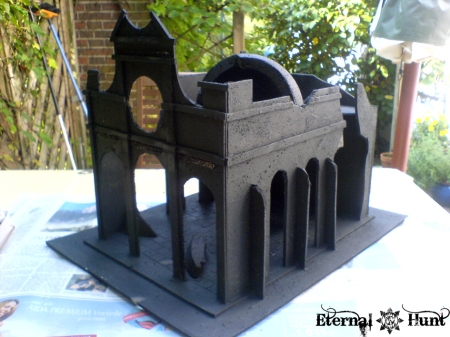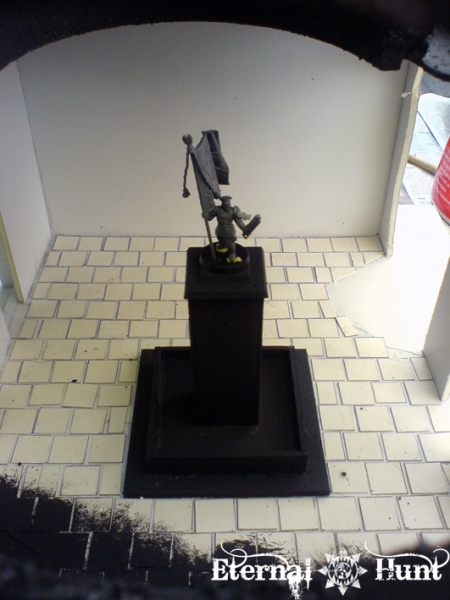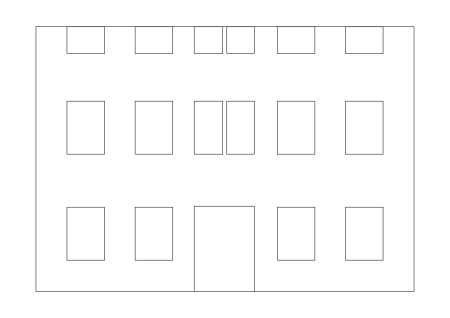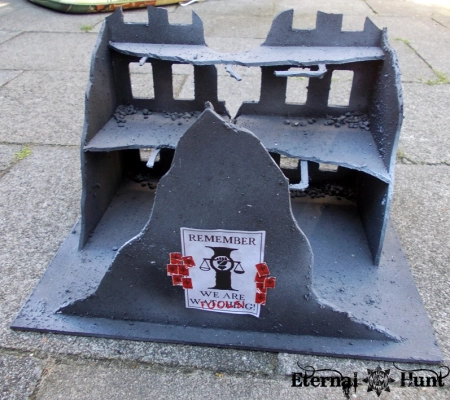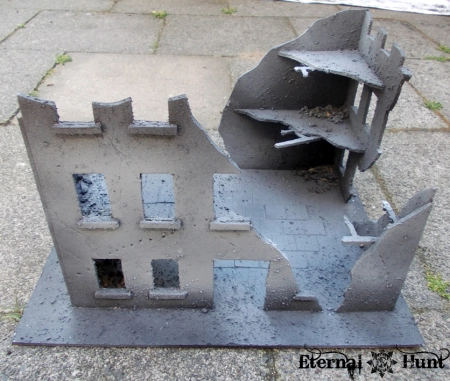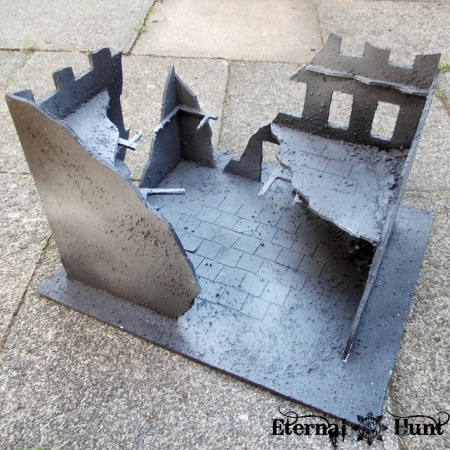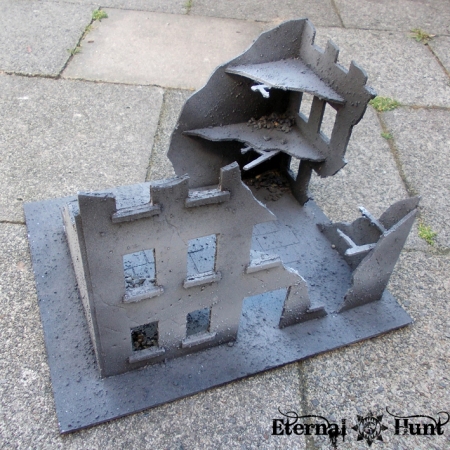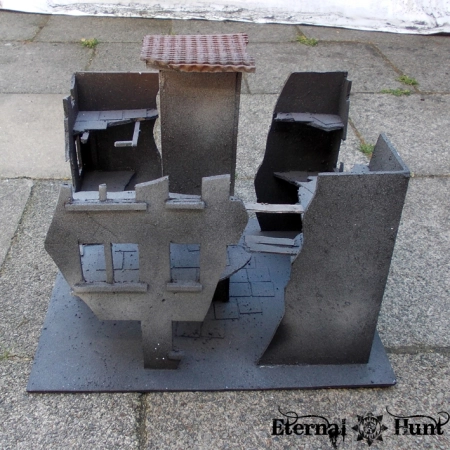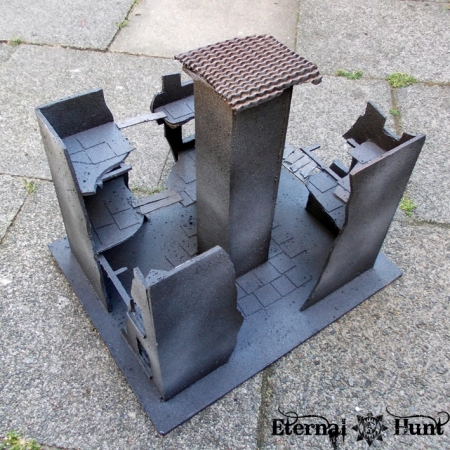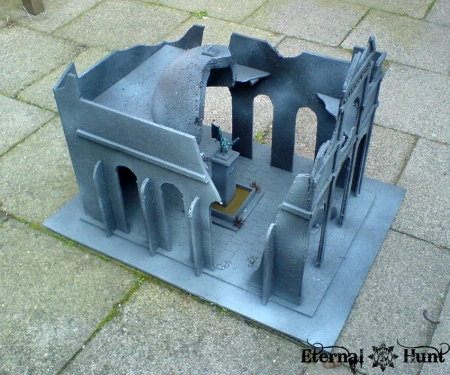Today I would like to talk about one of my favourite hobby blogs as well as one of my favourite hobby artists. So what is this about?
It has been almost exactly one year since Ron Saikowski last updated his blog, From the Warp, and told the community he was taking some time off from blogging. And even in a hobby scene as full of amazing hobby blogs as this, the absence of new content on FTW is still very keenly felt — at least by me.
But why? And what was/is so great about FTW in the first place? Allow me to elaborate:
When I got back into the hobby in 2010 after a longer hiatus, I was amazed and cowed in equal parts by the quality of the hobby content that could be found online: While I had been away, it seemed like everyone and their cousin had become expert painters, wielding superior techniques and baffling creativity. The presence of such a treasure trove of hobby related content proved to be equally exciting and intimidating: How was I to get back into all this and hope to build an army that I could truly be proud of? In any case, it seemed like an even more daunting task than it had been during my teens.
And then I discovered FTW, and things started to fall into place.
You see, like many other hobby blogs on the internet, FTW is full of beautifully painted models and valuable hobby advice. But while I love many blogs and read them regularly, no other site has come close to FTW when it comes to actually helping hobbyists, to teach them new stuff and to encourage them to step outside their comfort zone. At the same time, if you are simply in it for the pretty pictures, FTW should be right up your alley: Ron’s style of gritty realism is one of the most effective and elegant approaches I have seen in our hobby. And I’ll just take the liberty to intersperse my ramblings in this post with pictures of some of my favourite models of his — it goes without saying that none of these were built and painted by me. I own none of this stuff. Credit must go to Ron Saikowski.

This Cataphractii Terminator showcases one of Ron’s trademark conversion recipes, using cardboard-turned-into-plasticard to transform standard plastic terminators into Pre-Heresy individuals before FW ever released their own versions and before “Cataphractii” was even a word.
Model built and painted by Ron Saikowski.
It’s hard to pick my favourite part of FTW, as a matter of fact: The stunningly effective, yet surprisingly simple, recipes for achieving certain painting effects? The clean and seamless conversion work? The useful reviews of hobby products (and the mention of possible alternatives) or the insightful commentary about the hobby at large? All of these were reasons for why FTW still seems like such a great blog.

A fantastic converted Astartes chaplain, based on the pose of GW’s Gabriel Seth model.
Model built by Ron Saikowski
But at the heart of it all lies Ron’s own approach to matters: When posting on his blog, he was always, in the truest sense of the word, a scholar and a gentlemen: always helpful and willing to explain every step of his work until everyone was content and carefully addressing comments and suggestions made by the readers. And while Ron’s work taught me countless neat things, his posts never seemed like he was trying to lecture people of convert them to the “right” way of doing things in our hobby. In fact, there has probably never been a nicer, more pleasant blogger in our particular neck of the woods..uh webz 😉

Ron’s stunningly effective Pre-Heresy jetbike conversion: I have used the same approach to build jetbikes for my small Custodes force.
Model built and painted by Ron Saikowski
Another great thing is that Ron’s recipes and techniques are so great precisely because they can be used by normal people. Now we all enjoy looking at some GD level painting from time to time, but when it comes to getting our armies painted, we are happy enough to find a recipe that works and stick with it. FTW has always been a perfect resource in this respect, featuring countless wonderful painting recipes without the need for twenty extra-thin layers of paint in order to build up a certain hue. No freehanding under a microscope with a paintbrush the width of a horse hair here, but rather a way of doing things that produces awesome results with a modicum of work.

Ron’s Alpha Legion recipe is an example of a fairly simple approach that still yields awesome results.
Model bult and painted by Ron Saikowski
In fact, I’ll go out on a limb here and say that Ron remains one of my favourite painters for the reason that his pieces are perfectly realised: Poe described a thing called “Unity of effect”, arguing that all parts of a literary work should work towards the intended effect in an interlocking pattern. And this is very true of Ron’s paintjobs: While there may be painters who can pull of even more amazing stunts when it comes to blending, glazing, freehands or what have you, Ron’s models always look completely realised: All of the different colours and effects work together to create a model that looks like a perfect little slice of the 40k universe. Nothing detracts from the overall effect. The models seem like they could just step down from their bases and lay waste to your desktop. I cannot, for the life of me, think of a more successful way of painting!

The Novamarines’ colour scheme always seemed pretty gimmicky to me. But given Ron’s “unity of effect” approach, it is transformed into something that seems quite plausible.
Model built and Painted by Ron Saikowski
And while the blog is mostly about Space Marines, not only will non-Astartes players find much to like about the recipes and tutorials featured on FTW, but Ron is also sometimes at his best when he isn’t actually doing Marines. Take a look:

A very successful attempt at kitbashing an Eversor Assassin from nothing but plastic parts: This guy inspired me to build my own “Operative Sigma”.
Model built and painted by Ron Saikowski

A very evocative and “Blanchian” Imperial Mystic, unfortunately Ron’s only foray into the wonderful world of INQ28.
Model built and painted by Ron Saikowski
If all of this reads like a gushing love letter to you, that’s because it it: To date, FTW remains one of my favourite hobby resources, and I think it’s a crying shame that it isn’t updated anymore. In fact, I still regularly check whether there are any new updates — just in case…
The good news, though, is that all of the existing amazing content is still there for you to check out and discover. Ron’s tutorials are still every bit as helpful as they were when he first posted them. And the models are still inspiring and beautiful, a testament to effective painting. In fact, I would argue that From the Warp is still one of the most important hobby resources for those active in the hobby or just getting into it, and a priceless treasure trove of hobby knowledge.

Oldies but goldies: Ron’s own “Lustwing”, an army of Emperor’s Children Terminators. Just check out the scratchbuilt Pre-Heresy armour!
Models built and painted by Ron Saikowski
So, Ron, if you’re reading this: Thanks for all the amazing work! We owe you big time! And here’s hoping that you’ll eventually get back to updating your blog! And to you readers: FTW should really be part of your regular hobby diet, if only to check out all of the great ideas and tips. So head on over there right now and bookmark that page! And if you’ve been a regular reader of FTW before, well, you know what I am talking about anyway, right?
In closing, while most of the content on FTW is truly amazing, here are a couple of personal favourites of mine that I think you should check out:
Ron’s Pre-Heresy Jetbike conversion
Converting a skull helmet for chaplains or Dark Apostles
Ron’s very own “Lustwing”, a counts as Deathwing force consisting of Emperor’s Children Terminators.
Truly heartwarming: Ron’s Chaos Daemon based on a sketch by his daughter
How to make your Space Marine Captain stand out
His collection of advice on basing is still essential reading for every hobbyist, if you ask me.
So what’s your opinion on FTW? And has anyone been hearing from Ron, perchance? Let me know what you think in the comments!
And, as always, thanks for looking and stay tuned for more!


